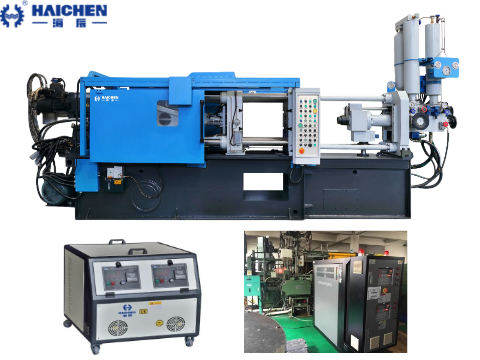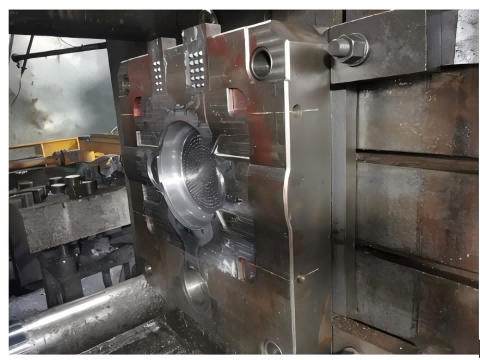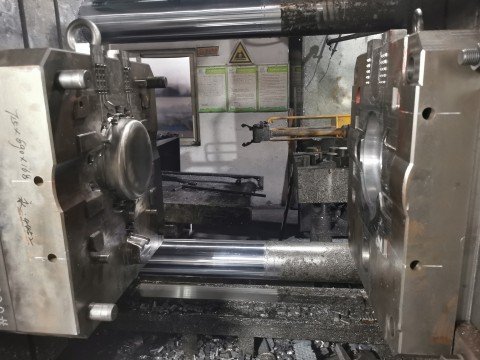Temperature failure analysis is vital for identifying temperature-related issues in die casting, ensuring optimal performance and quality.
In the field of metal parts manufacturing, die-casting technology can produce workpieces with high precision and smooth surface due to its flexible and efficient characteristics.
But factory masters know that if there is a problem with the temperature control link of the die-casting machine, the performance and durability of the machine will be greatly reduced.
This time we specifically study the temperature failure of the die-casting machine – explain what causes abnormal temperature, what problems these failures will cause, and more importantly, share proven solutions to help everyone maintain the best working condition of the equipment.

The core role of temperature control in die casting process
In die casting process, temperature control is directly related to casting quality, mold life and stability of production efficiency. The specific impact is reflected in three key links:
- Mold temperature: Different alloys require specific temperature ranges. For example, aluminum alloys are recommended to be controlled between 200-230℃, zinc alloys require 160-180℃, and magnesium alloys are 250-300℃. Uneven temperature may cause defects such as shrinkage, cold shut (incomplete fusion of molten metal) or sticking to the mold, mainly because the temperature difference will interfere with the uniform solidification of the metal.
- Molten metal temperature: Taking aluminum alloy as an example, the pouring temperature must be strictly maintained at 670-710℃. Too low temperature will reduce the fluidity of the metal and lead to incomplete filling; too high temperature will easily produce pores (cavities formed by gas retention).
- Hydraulic system oil temperature: The optimal working range is 15-55℃. If the temperature exceeds 55°C, the hydraulic oil will accelerate oxidation (oil deterioration), causing seal failure and system pressure fluctuations. Long-term operation may damage key components such as the hydraulic pump.

Causes of Temperature Failure analysis
- Inadequate Cooling System
- Improper Lubrication
- Material Properties
- Environmental Factors
Inadequate Cooling System
When the cooling system of a die-casting machine cannot operate stably, the temperature control of the equipment will face severe challenges. Insufficient cooling water flow (such as pipe blockage or water pump failure), design defects in the heat dissipation channel, or accumulation of dirt inside the cooler may directly lead to overheating of the equipment. In this case, the hydraulic oil temperature may quickly rise to above 55°C, causing pressure fluctuations, accelerated aging of seals, and even permanent damage to key components. Operators can identify cooling system abnormalities in a timely manner by monitoring signs such as abnormal oil temperature gauges and continuous high-speed operation of cooling fans.
Improper Lubrication
Lubricants reduce friction between parts by forming a protective film, thereby controlling the heat generated during equipment operation. If lubrication operations are not standardized (such as incorrect oil selection, insufficient filling or untimely replacement), excessive heat will continue to accumulate in the friction area, eventually causing equipment failures due to abnormally high temperature.
Material Properties
In the die casting process, the heat transfer ability of the material itself will directly affect the temperature control effect. If the material transfers heat slowly, the heat will easily accumulate in a local area, causing the temperature in that area to be too high.
Environmental Factors
Changes in temperature and humidity in the workshop will directly affect the temperature control effect of the die casting machine. If the workshop temperature is too high, it will be more difficult for the machine to dissipate heat, and the overheating problem may become more serious.

Effects of Temperature Failure analysis
- Component Wear and Tear
- Dimensional Inaccuracy
- Reduced Efficiency
- Safety Hazards
Component Wear and Tear
If the machine is too hot, the parts inside will break down faster. This means that the parts won’t last long before they need to be replaced, and the machine will be more likely to break down.
Dimensional Inaccuracy
Temperature fluctuations can cause physical dimensional changes in molds and castings. When the temperature rises, the volume of the material generally increases; when the temperature drops, the volume decreases. This temperature-induced dimensional change can cause the actual dimensions of the final product to deviate from the design standards or even cause defects.
Reduced Efficiency
Temperature failures will directly affect the efficiency of equipment operation. When the temperature of the equipment is too high, its operation speed will be significantly slowed down, the production cycle will be forced to be extended, and the overall output will be reduced.
Safety Hazards
At the same time, high temperature will also cause serious safety problems: operators may face the risk of scalding, and in extreme cases, it may even trigger fire or explosion accidents, and protective measures must be taken immediately.

Preventive Measures
- Regular Maintenance
- Temperature Monitoring
- Material Selection
- Environmental Control
Regular Maintenance
To avoid equipment failure due to temperature problems, two things must be done on a daily basis: first, check the cooling system on time to see if there is any water leakage and whether the cooling water pipeline is clean; second, manage the lubrication part well and confirm whether there is enough lubricating oil in the machine.
Temperature Monitoring
In order to do a good job of prevention, we need to keep an eye on the temperature. After installing temperature sensors and monitoring equipment, staff can detect abnormal temperature rise in time, so that treatment measures can be taken as soon as possible.
Material Selection
Choosing materials with appropriate thermal properties for both the die and the cast parts can help in better temperature management.
Environmental Control
Maintaining a controlled environment with stable ambient temperature and humidity levels can aid in preventing temperature-related issues.
For die-casting machines, accurate temperature control is directly related to whether the equipment can operate efficiently and safely. If the temperature is out of control, it may cause a variety of problems. Therefore, manufacturers need to deeply analyze the root causes of temperature out of control and its adverse effects, and take preventive measures in advance. Doing so can not only improve the operating efficiency of the equipment, but also significantly extend the service life of the equipment.

If you need a high-quality die-casting machine with advanced temperature control functions, HAICHEN is a priority option. The brand has more than 20 years of technical accumulation in the field of die-casting machine manufacturing. Its equipment uses real-time temperature monitoring and PID intelligent control system to accurately maintain the mold temperature and effectively improve the casting qualification rate. As an industry-leading manufacturer, HAICHEN has served more than 30 countries around the world and can provide customized temperature control solutions for different alloy materials (such as aluminum, zinc, and magnesium).



